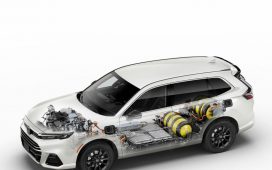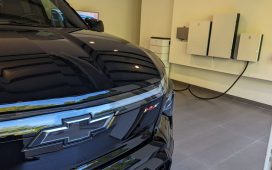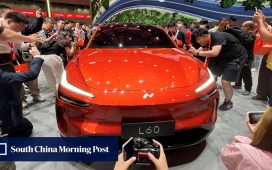
Electric vehicles (EVs) have come a long way in the past decade. With increased concerns about the environment and the need to reduce carbon emissions, EVs have become a popular alternative to gasoline-powered cars. Over the years, car manufacturers have been investing heavily in the development of EVs, and the result is a range of vehicles with advanced technology, longer driving ranges, and improved performance. In this article, we take a look at how far electric car technology has come in the past ten years and the impact that Nissan Leaf and Tesla Model 3 have had on the EV market.
The Nissan Leaf: Pioneering Affordable Electric Cars
The Nissan Leaf was introduced in 2010 and was one of the first EVs to be offered on a mass-market scale. It was a game-changer, offering a practical and affordable alternative to gasoline-powered cars. The Leaf was powered by a 24 kWh lithium-ion battery, which gave it a driving range of around 100 miles per charge. This was a significant improvement compared to other EVs of the time, which typically had a range of around 50-70 miles.
In the years that followed, Nissan continued to refine the Leaf, increasing its driving range and incorporating advanced features like autonomous driving and a more sophisticated infotainment system. The latest model of the Nissan Leaf now has a range of up to 239 miles, making it an even more practical option for drivers.
Tesla Model 3: Setting the Standard for Electric Cars
The Tesla Model 3 was introduced in 2016 and quickly established itself as the benchmark for electric vehicles. With its sleek design, advanced technology, and impressive driving range, the Model 3 was unlike anything else on the market.
One of the standout features of the Model 3 is its range. The Model 3 has a range of up to 358 miles on a single charge, making it one of the longest-range EVs on the market. This means that drivers can travel further without having to stop and recharge, making it a more convenient option for longer trips.
The Model 3 is also packed with advanced features, including a sophisticated infotainment system, a 15-inch touchscreen display, and Tesla’s autopilot technology. All of these features make the Model 3 a true driver’s car, with a level of performance and technology that is unmatched by other EVs on the market.
Battery Technology: The Key to Improved Range and Performance
Battery technology has been one of the main areas of improvement in the past decade. Lithium-ion batteries have become smaller, lighter, and more efficient, allowing for longer driving ranges and improved performance.
In 2010, the Nissan Leaf was fitted with a 24 kWh lithium-ion battery, which gave it a range of around 100 miles. Fast forward to 2023, and the latest model of the Nissan Leaf has a battery capacity of 62 kWh, giving it a range of up to 239 miles. This represents a significant improvement in battery technology, making EVs more practical and accessible to drivers.
Tesla has been at the forefront of battery technology, with the Model 3 being fitted with a 75 kWh battery as standard. This gives the Model 3 an impressive range of up to 358 miles, making it one of the longest-range EVs on the market. Tesla’s battery technology has also been incorporated into their energy storage products, which allow households and businesses to store excess energy from their solar panels and use it when needed.
Infrastructure: Making it Easier to Own an Electric Car
In the past decade, the infrastructure for EVs has been improved significantly. The number of charging points has increased, making it easier for drivers to charge their cars while on the go. This has been a crucial factor in making EVs more practical for everyday use and increasing their popularity.
In the UK, the government has been investing in the installation of charging points, with the aim of having charging points within 30 miles of every driver by 2030. This will make it easier for drivers to adopt EVs, giving them the confidence to make the switch from gasoline-powered cars.
There have also been improvements in the charging technology itself. The introduction of fast-charging networks, such as Tesla’s Superchargers, has made it possible to charge an EV in just a matter of minutes. This has been a game-changer for long-distance travel, allowing drivers to quickly top up their battery on a road trip.
Conclusion
In conclusion, the past decade has seen significant advancements in electric car technology, with the Nissan Leaf and Tesla Model 3 leading the charge. The improvements in battery technology, coupled with the expansion of charging infrastructure, have made EVs more practical and accessible to drivers. The future of EVs looks bright, with car manufacturers continuing to invest in the development of this technology. As the technology improves, we can expect to see even more impressive vehicles, with longer ranges, advanced features, and improved performance. If you’re considering making the switch to an EV, now is a great time to do so, as the options available to drivers are better than ever.












